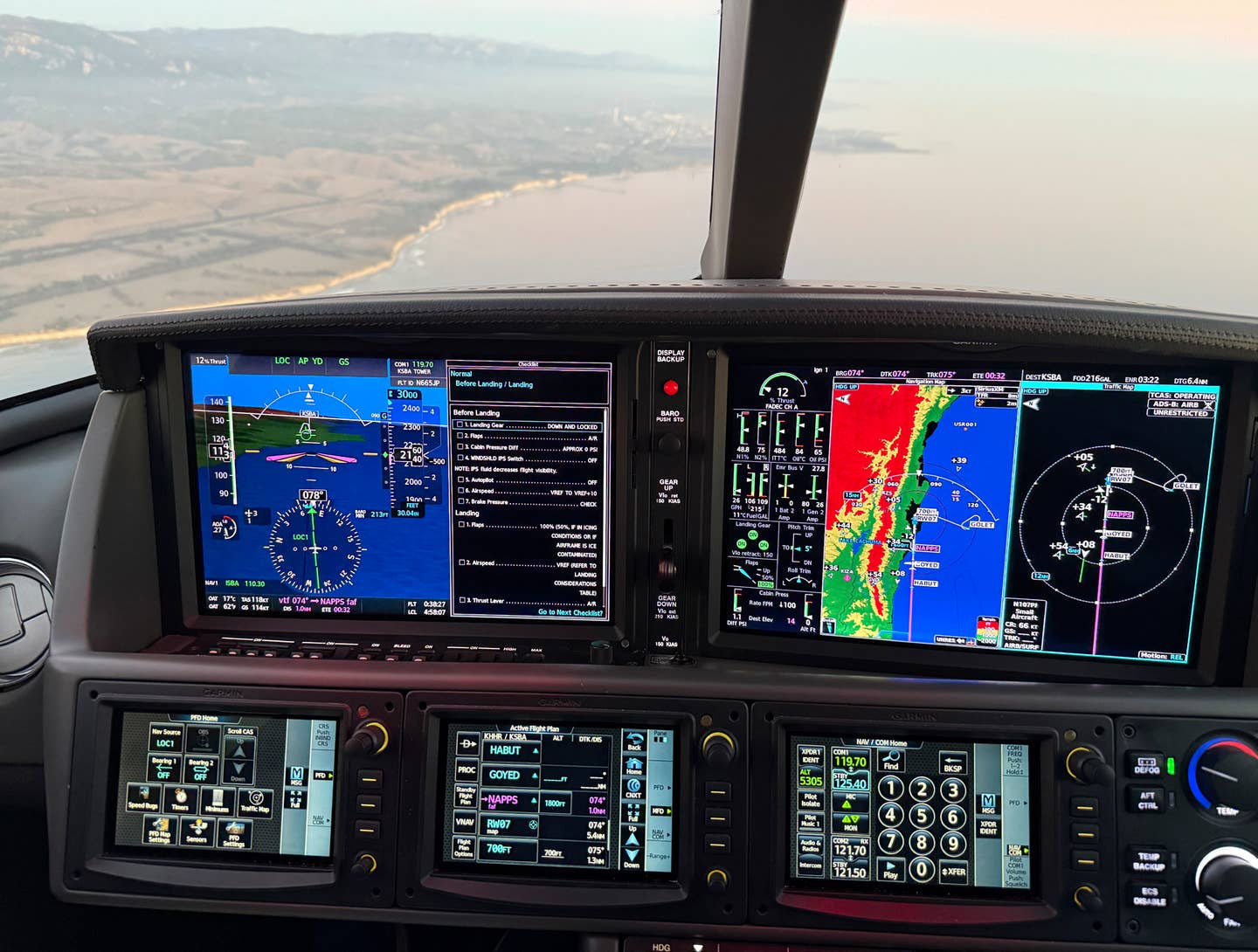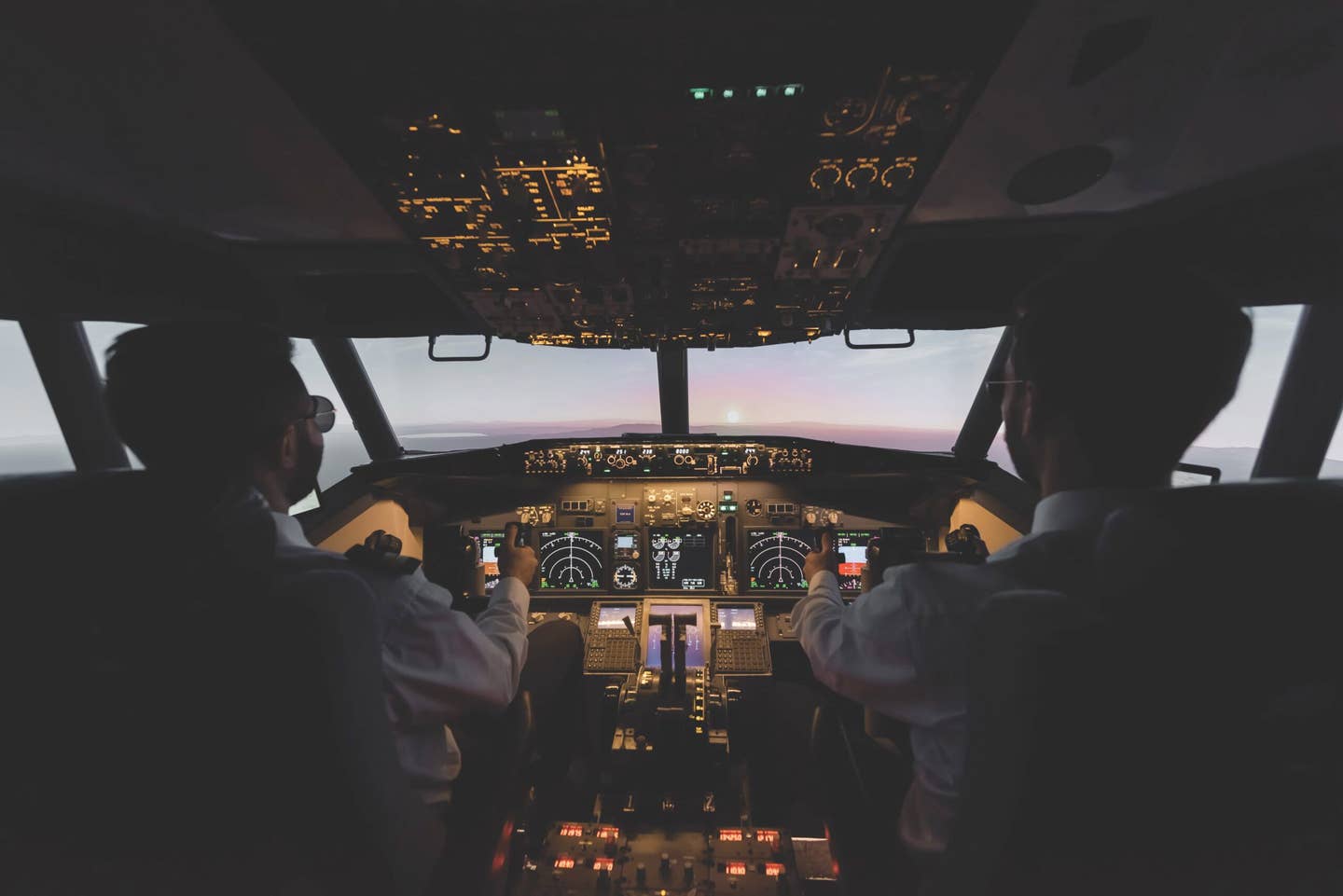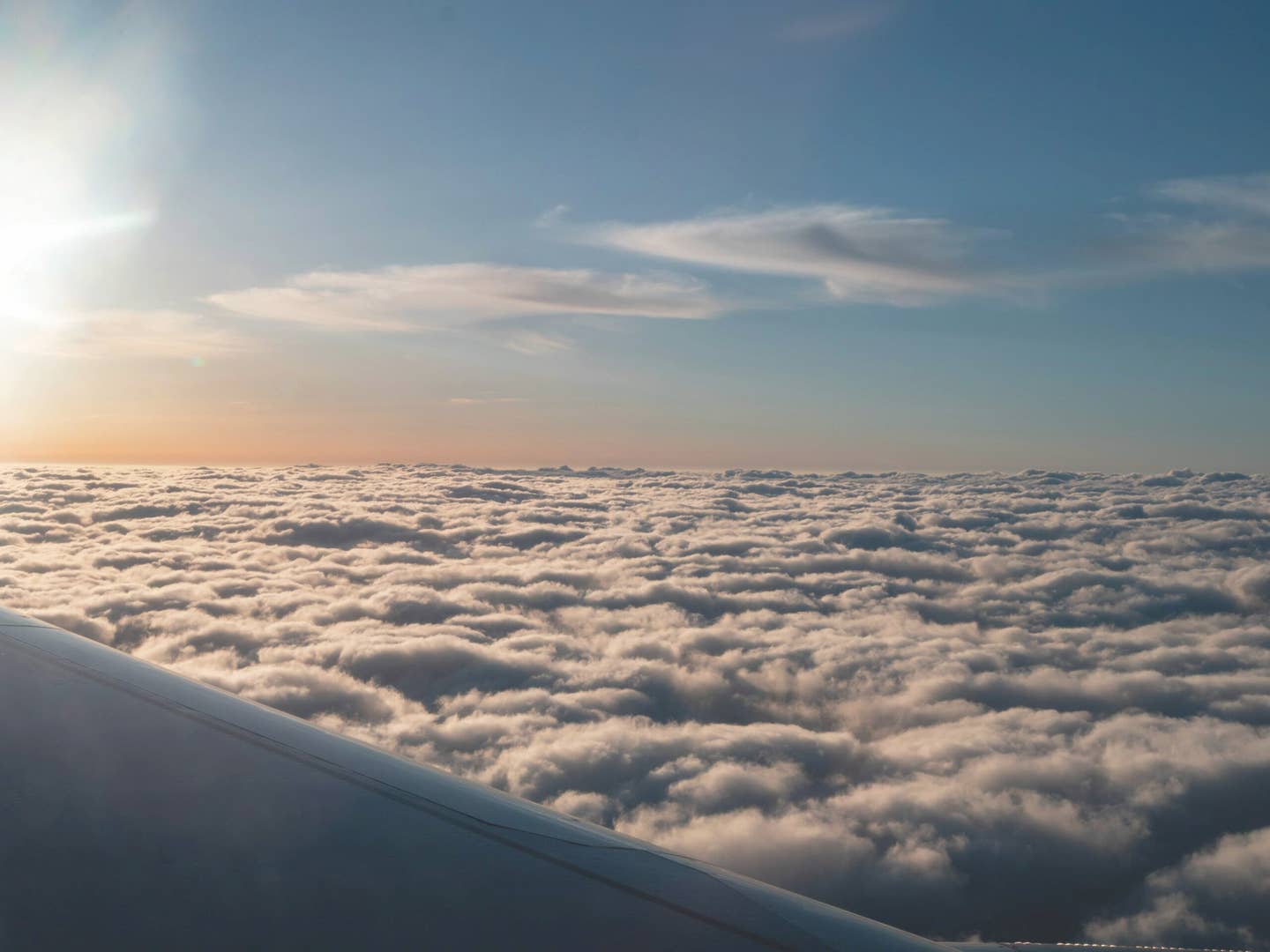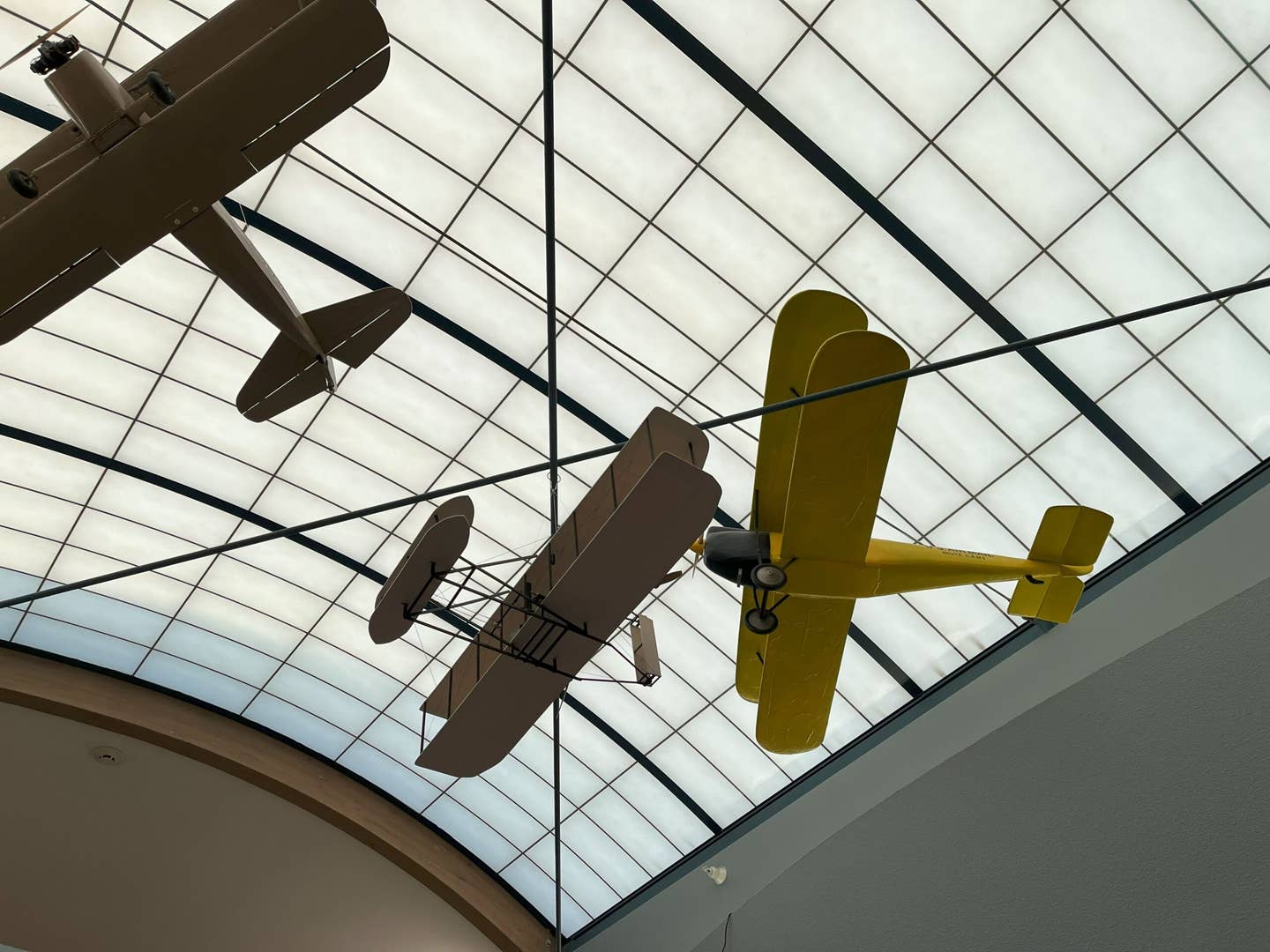
In 1958, as a stunt intended to promote the new Hacienda Hotel in Las Vegas, two pilots, Robert Timm and John Cook, stayed aloft in a Cessna 172, regularly refueled from a racing pickup truck, for 64 days and 22 hours. (Why they didn’t stay up another two hours and make it an even 65 — retirement! — I don’t know. Perhaps the engine had reached TBO.) At any rate, that flight put an end to a decades-long craze for setting endurance records, an activity with no more practical value than flagpole-sitting. Timm and Cook have gone to their rewards, but their airplane hangs — now aloft, with the help of a few cables, indefinitely — from the ceiling of the baggage claim area at Las Vegas’ McCarran Field.
Time-aloft records give new luster to the word “endurance,” not to mention the phrase “get out and stretch your legs.” Apart from its human dimension, however, “endurance” has a technical meaning in aviation: The temporal sibling of “range,” it is the longest time a powered airplane can remain airborne in still air without refueling.
The “endurance speed” is the speed at which the least power, and therefore the lowest fuel flow, is required to stay up. You might use it if, for instance, you’re low on fuel and waiting for the fog to lift. It’s slower than the gliding speed; for most general aviation airplanes, it’s around 10 or 15 knots above the clean stalling speed.
The lower an airplane’s wing loading, the slower it can fly and the less power is needed to keep it aloft. The success of the late Paul MacCready’s Gossamer series of man-powered aircraft was due to his insight that the key to the problem was not maximum aerodynamic efficiency but minimum sinking speed. Given a limited supply of power, such as a human being, an airplane had to have as low a wing loading — that is, be as large and as light — as possible.
The Gossamer formula allowed MacCready to pocket several large cash prizes, but it seemed to have little practical application until, in the 1990s, a new kind of mission emerged that required only endurance and nothing else.
The idea was to use airplanes as low-cost alternatives to satellites. An airplane orbiting high above weather could serve as a telecommunications relay or provide high-resolution surveillance of conflict or disaster areas. A new kind of airplane was born, and they named it HALE: high-altitude, long-endurance.
One early HALE project was Scaled Composites’ Proteus, a spidery tandem-wing contraption with two 2,300-pound-thrust Williams FJ44s and a service ceiling above 60,000 feet. The firm that commissioned Proteus intended it as an orbiting communications platform. There was talk in 1998 of pilots building jet time while studying college courses or pornography as they circled (always in left turns) for days at a time, beaming tweets between isolated African villages. That did not come to pass. Proteus has had, instead, a long and extremely useful life as a multipurpose high-altitude test bed. Still active after 18 years and more than 4,000 hours, it is one of Burt Rutan’s most successful creations, despite not having been designed for the use to which it was put.
More recent HALE projects have been pilotless. They solve the endurance problem by dispensing with fuel altogether and relying on power collected by solar cells.
Unfortunately, even above clouds, the sun shines only half the time. The airplane has to collect twice as much energy as it needs during daylight hours to stay aloft through the night. The energy must be stored in batteries, which, compared with conventional fuels, are notoriously heavy.
HALEs must fly above weather, but altitude reduces endurance. The reason is that the speed for best endurance is an indicated airspeed, but the power required to maintain that speed is a function of true airspeed. Suppose your UAV requires 2 horsepower to remain aloft at its best endurance speed of 25 kias at sea level. At the same indicated airspeed at 65,000 feet, it will have the same drag, but it will be moving that drag along at 92 ktas rather than 25 and will require 7.3 horsepower to do so.
With current solar-cell and battery technology, electric HALE UAVs have the dimensions of airliners and the weight of a two-seat homebuilt. Take for example Aquila, the HALE project funded by Facebook to get the entire world connected to the Internet (and, incidentally, to Facebook).
You may have seen it in TV ads. Aquila is an elegant design: a slender, untapered flying wing, 138 feet in span, gently swept, with winglet-cum-vertical stabilizers at the wingtips. Four cylindrical nacelles containing electric motors create the effect of an etiolated Tu-144. Its weight, with batteries, is reported to be less than 1,000 pounds — about that of a grand piano, one press release boasted, apparently unaware that “grand piano” is synonymous with “extremely heavy.” It would have been more interesting to learn the bare airframe weight. That is always the surprising thing about HALEs: The Airbus Zephyr 7, which remained aloft for two weeks in 2010, has a wingspan of 73 feet and weighs only 117 pounds, including batteries and motors.
HALEs present extraordinary structural challenges. Being very light, they are playthings to every puff and swirl, and being very large, they may experience different gust loadings at different points on the aircraft. Their high-aspect-ratio wings cannot be made perfectly rigid and are bound to flex in new and unpleasant ways, changing the shape and the aerodynamic behavior of the aircraft.
The largest HALE yet built, AeroVironment’s Helios, disintegrated in turbulence on a routine test flight in 2003, but not before it had set a still-unchallenged record for sustained flight above 96,000 feet. Tailless, Helios was a limber 2,000-square-foot rectangle, 247-feet long, towed along at 20 knots by 14 motors along its leading edge.
And you thought you’d seen everything!

Sign-up for newsletters & special offers!
Get the latest FLYING stories & special offers delivered directly to your inbox






